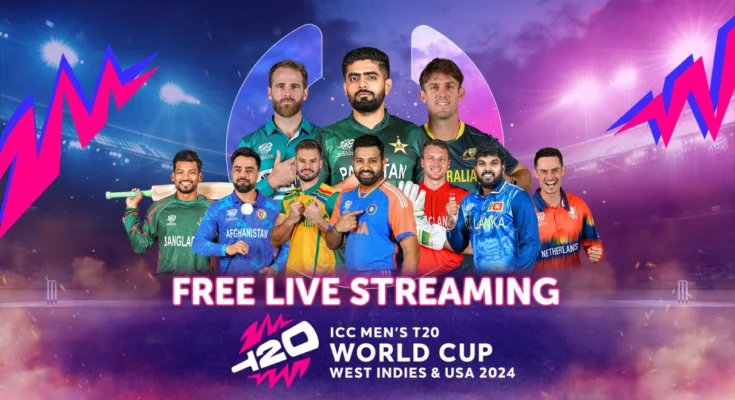The World Cup is an unparalleled global spectacle that unites millions of devotees to revel in the art of football. While catching the thrill of live matches in person is unmatched, accessing real-time streams online can sometimes pose hurdles, such as geographical restrictions, subscription costs, and other obstructions. However, with the right tactics, watching the World Cup at no cost, from any device, becomes an attainable feat. Let’s explore the diverse methods and useful tips to make this a reality.
Navigating Your Streaming Possibilities
Authorized Broadcasters
The most trustworthy way to witness World Cup matches is via official broadcasters. These networks have secured exclusive rights to stream games live in different territories.
Free Streaming Platforms
For those seeking to watch the World Cup without opening their wallets, various free streaming platforms offer live coverage. However, it’s paramount to be discerning about the sources, as unreliable streams may expose you to malware or even legal pitfalls.
Authorized Broadcasters
Gaining Access to Official Streams
Authorized broadcasters generally offer high-caliber streams accessible through their websites or apps. Examples include BBC iPlayer for the UK audience, Fox Sports for the US, and SBS in Australia. These services may require you to log in using your cable provider credentials.
Leveraging Cable Subscriptions
If you hold a cable subscription, you can typically stream live matches through your provider’s digital platform or app. Networks such as ESPN or Sky Sports cater to subscribers with online streaming options, ensuring you don’t miss a minute of the action.
Broadcaster Mobile Applications
Many official broadcasters also feature dedicated mobile apps that offer live streaming services. Installing these apps on your smartphone or tablet ensures you can follow matches in real-time, no matter where you are.
Free Streaming Platforms
Popular Free Streaming Sites
Sites like Crackstreams, Stream2Watch, and FirstRowSports frequently offer free live streams for major sporting events, including the World Cup. Although convenient, these sites can be fraught with risks like intrusive ads or harmful malware.
Social Media Streaming
Social media networks such as Facebook, Twitter, and Reddit often see users sharing live streams during the tournament. By keeping an eye on relevant hashtags or joining fan communities, you may uncover streams being shared by other users.
Third-Party Apps and Websites
Apps like Mobdro and Live NetTV aggregate live channels, including those that broadcast sports, providing yet another avenue to watch the World Cup without paying. Just ensure you’re downloading these apps from trustworthy sources to mitigate any security threats.
Device Compatibility
Streaming on Smartphones
Smartphones are a preferred option for many due to their portability. To ensure a smooth experience, make sure you have a reliable internet connection and consider using official broadcaster apps or reputable third-party streaming apps.
Streaming on Tablets
Tablets provide a larger screen, making them ideal for watching sports. Similar to smartphones, using authorized broadcaster apps or verified streaming sites is the best approach for seamless streaming.
Viewing on Laptops or PCs
Laptops and PCs offer the most flexibility, as a variety of streaming options are available via web browsers. Ensure your device is connected to a fast internet source and consider using ad-blocking software if you’re relying on free streaming platforms.
Watching on Smart TVs
For the ultimate viewing experience, consider watching matches on a smart TV. Many smart TVs have apps from official broadcasters, or you can simply use a web browser to access the streams.
Overcoming Geographic Restrictions
Utilizing VPN Services
Virtual Private Networks (VPNs) can help you bypass geo-restrictions by concealing your real IP address, making it appear as though you’re browsing from another country. Popular choices include NordVPN, ExpressVPN, and CyberGhost.
Employing Proxy Servers
Similar to VPNs, proxy servers enable you to overcome geographic barriers, although they might not offer the same level of security or speed as VPNs.
Ensuring a Smooth Streaming Experience
Internet Speed Considerations
A stable and fast internet connection is critical for uninterrupted streaming. You’ll need at least 5 Mbps for standard-definition streams and 25 Mbps for 4K quality to avoid buffering issues.
Selecting Appropriate Streaming Quality
Adjust your stream’s quality depending on your internet speed. If your connection is slow, lowering the resolution can help reduce buffering, while a higher resolution provides a superior experience if your internet can handle it.
Troubleshooting Common Issues
Common problems like buffering, lag, or audio glitches can typically be resolved by refreshing the stream, checking your internet connection, or rebooting your device. Clearing your browser’s cache or switching to a different browser may also resolve these issues.
Legal Considerations
Understanding Streaming Rights
Broadcasting rights for the World Cup are sold to broadcasters, who then provide access via paid services. Unauthorized streams violate copyright laws, potentially leading to legal repercussions.
The Dangers of Unauthorized Streaming
Using illegal streams exposes you to malware, phishing schemes, and possible legal consequences. It’s always safer to stick to legitimate sources or use tools like VPNs to access authorized streams.
Conclusion
Watching the World Cup for free online, from any device, is entirely possible when you employ the correct methods. Whether you’re using official broadcasters, free streaming platforms, or bypassing geographic restrictions with a VPN, there’s no shortage of ways to immerse yourself in the excitement of the World Cup. Just ensure you are mindful of legalities and prioritize safe, reliable streaming sources. Now, get ready to support your favorite team and catch every unforgettable moment!




